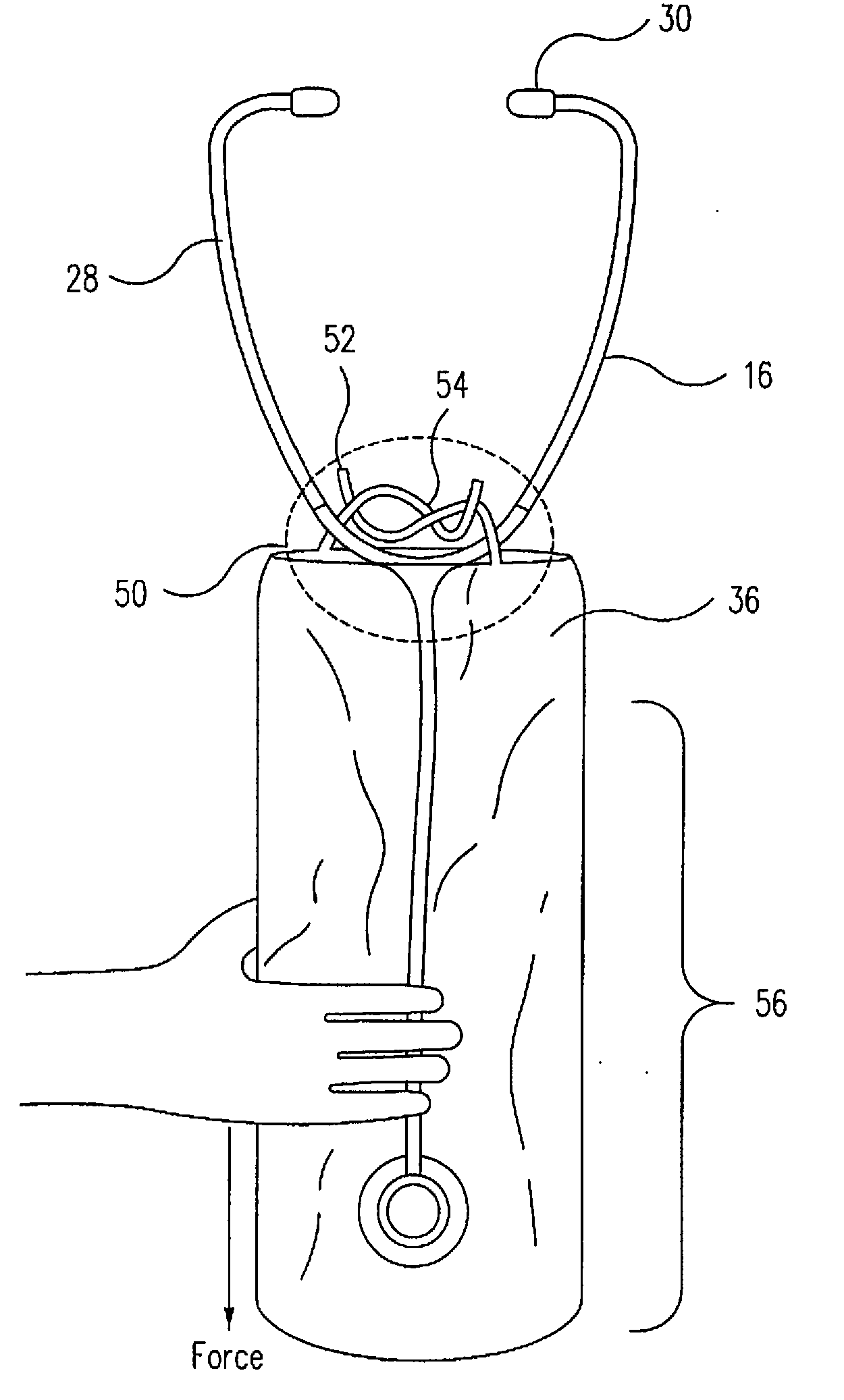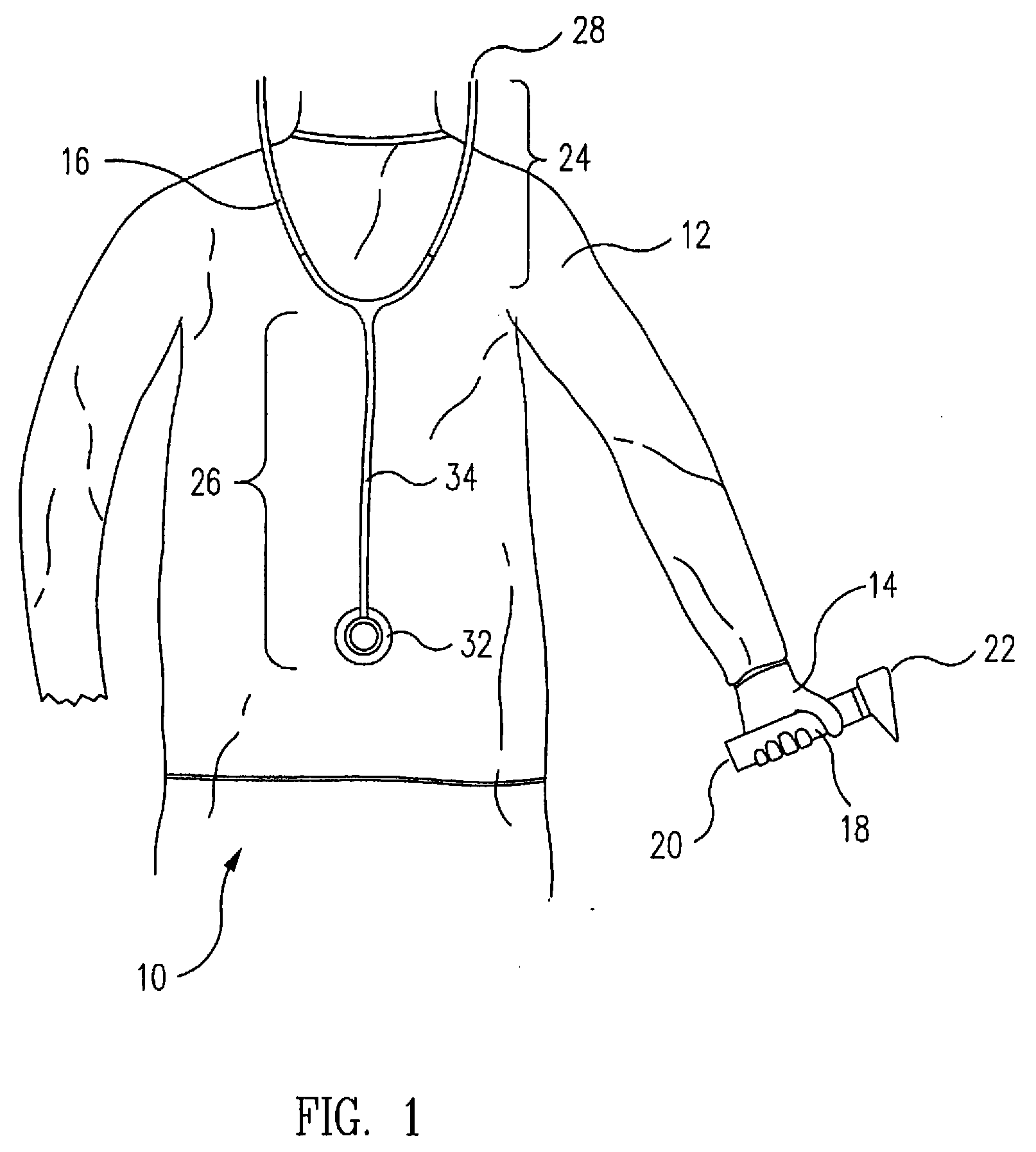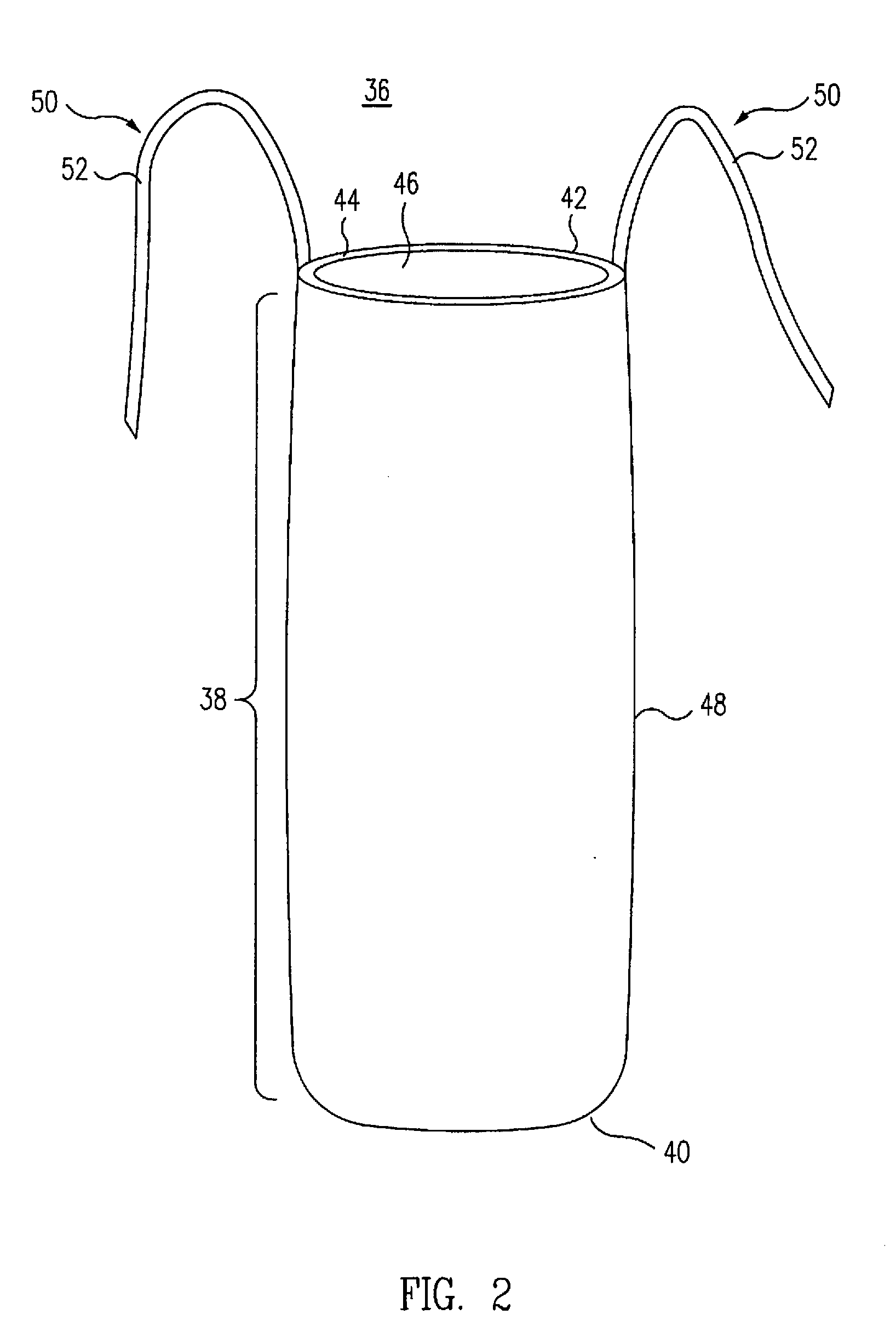Protective covering for medical instruments
- Summary
- Abstract
- Description
- Claims
- Application Information
AI Technical Summary
Benefits of technology
Problems solved by technology
Method used
Image
Examples
Embodiment Construction
)
[0025]FIG. 1 is a sketch of the torso of a health care provider 10 wearing gown 12, gloves 14, and stethoscope 16, and holding an otoscope 18. (Otoscopes and opthalmoscopes differ in the attachments affixed to the head of the instrument and in their primary targets, but may share an instrument body.) Directions and descriptors are generally given with reference to the user 10, so the proximal end 20 of the otoscope 18 is the end in the user's grasp, while the distal end 22 of the otoscope 18 is the portion in contact with or nearest to the patient. Similarly the proximal portion 24 of the stethoscope 16 is close to the user's head (not shown) while the distal portion 26 hangs along the user's torso when not in use. The proximal portion 24 of the stethoscope 16 includes the ear piece tubes 28 and ear tips 30 (see FIG. 3). The distal portion 26 includes the head, or bell, 32 of the stethoscope 16 and most, or even all, of the listening tube 34 (sometimes called “tubing” or “tube”), a...
PUM
 Login to View More
Login to View More Abstract
Description
Claims
Application Information
 Login to View More
Login to View More - R&D
- Intellectual Property
- Life Sciences
- Materials
- Tech Scout
- Unparalleled Data Quality
- Higher Quality Content
- 60% Fewer Hallucinations
Browse by: Latest US Patents, China's latest patents, Technical Efficacy Thesaurus, Application Domain, Technology Topic, Popular Technical Reports.
© 2025 PatSnap. All rights reserved.Legal|Privacy policy|Modern Slavery Act Transparency Statement|Sitemap|About US| Contact US: help@patsnap.com



